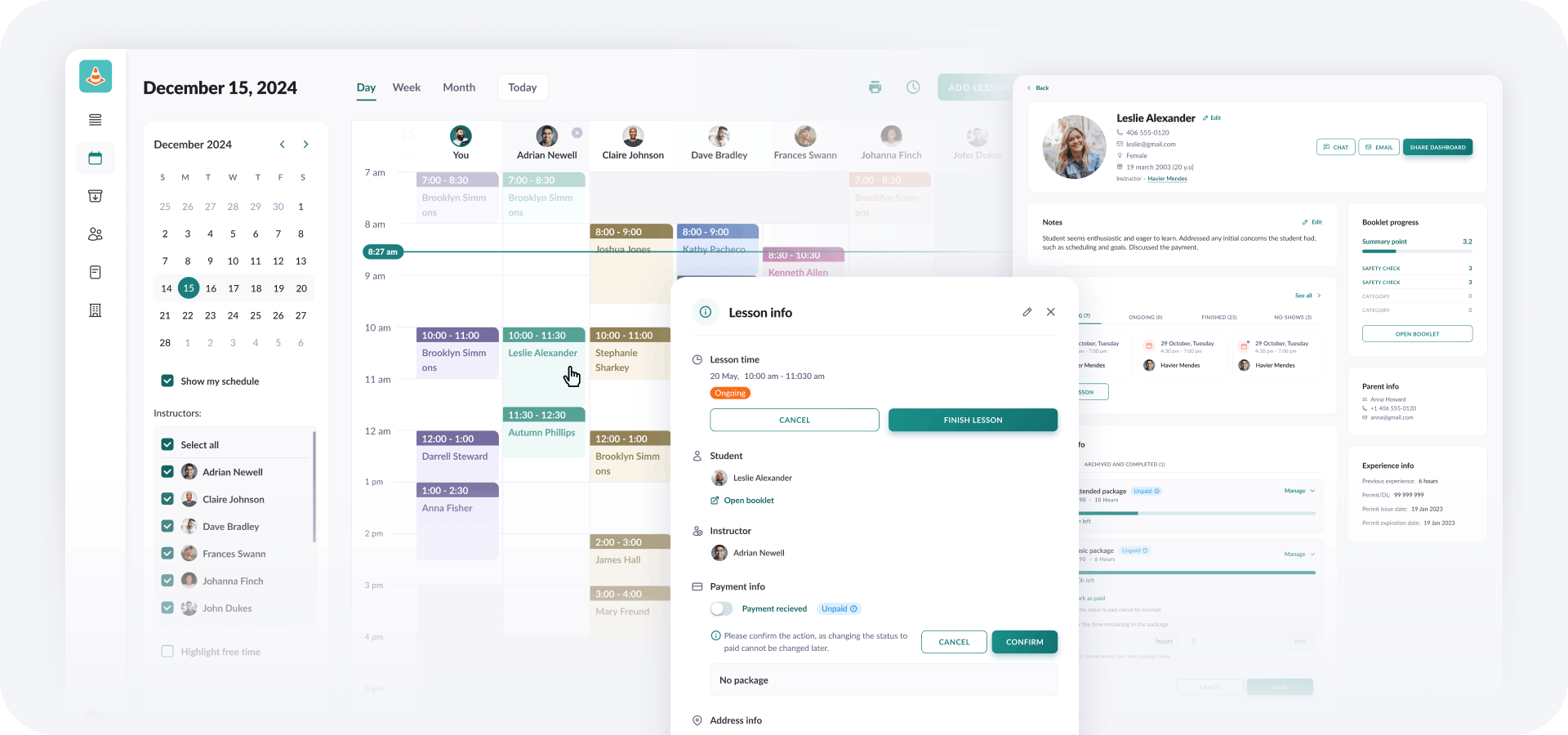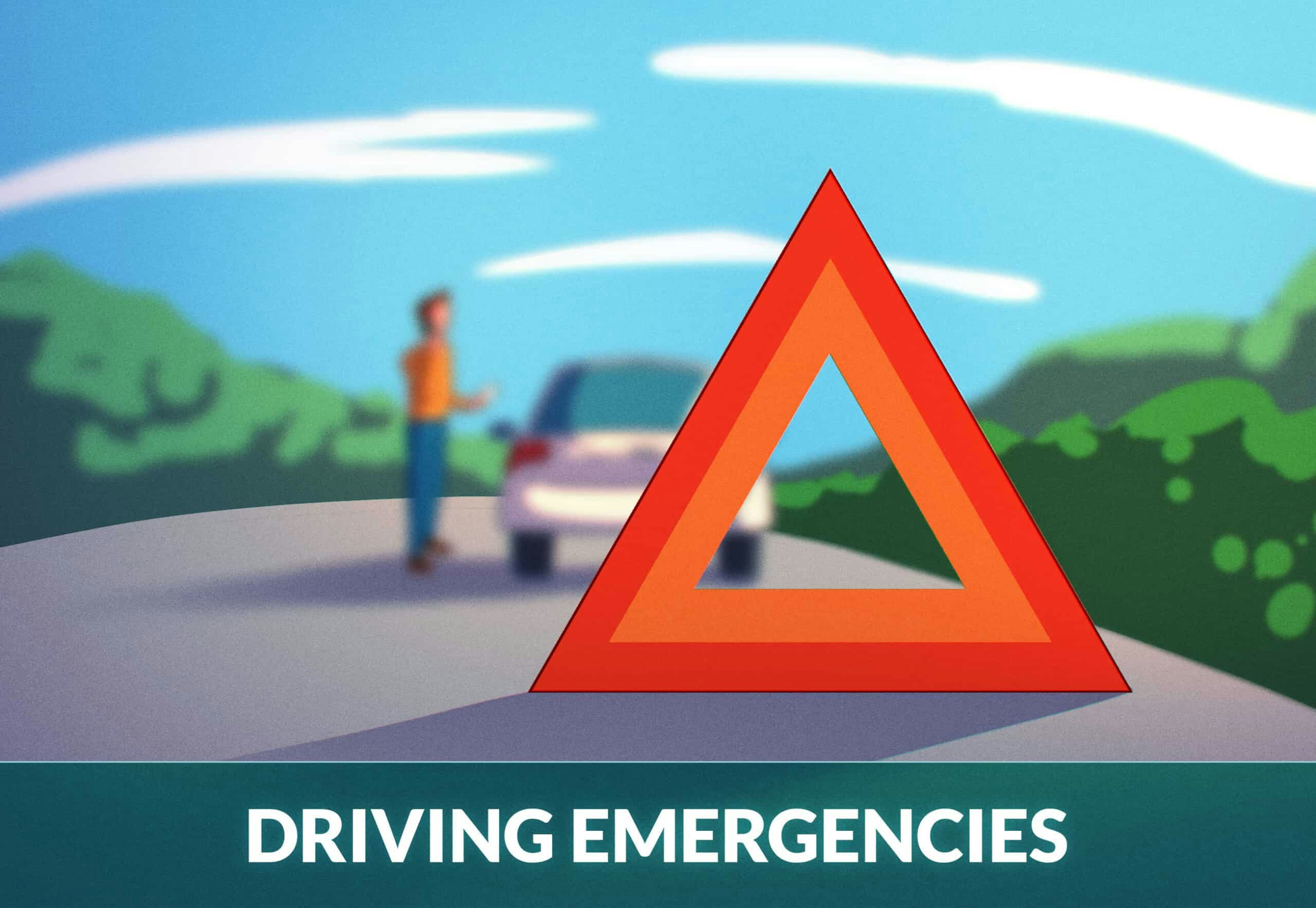
12 Common Driving Emergencies and How to Survive Them
No matter how long you’ve been driving, learning how to drive safely in emergency situations can mean the difference between life and death. It is important to be prepared by understanding how to handle different vehicle emergencies.
We’ll go through 12 common types of driving emergencies and how you should act to survive them:
- Stopping your vehicle on the road
- Tire Blowout or loss of wheel
- Power steering failure
- Headlight failure
- Stuck gas pedal
- Wheels off pavement
- Skidding
- Brake failure
- Oncoming vehicles in the same lane
- Crashing into the water
- Car fire
- Animals on the road
How to Handle Emergency Situations While Driving
Anytime you get behind the wheel of your vehicle, you must be ready to handle emergency situations while driving.
Emergency braking
Drivers can lose control of their vehicles due to a number of reasons. Most modern cars are equipped with Anti-lock Braking System (ABS), which helps control the braking force to prevent skidding in poor/slippery conditions and under heavy braking.
When emergency braking is necessary:
- If your car is equipped with conventional brakes – pump the brakes
- If your car is equipped with ABS – brake hard and maintain pressure, otherwise the ABS won’t work
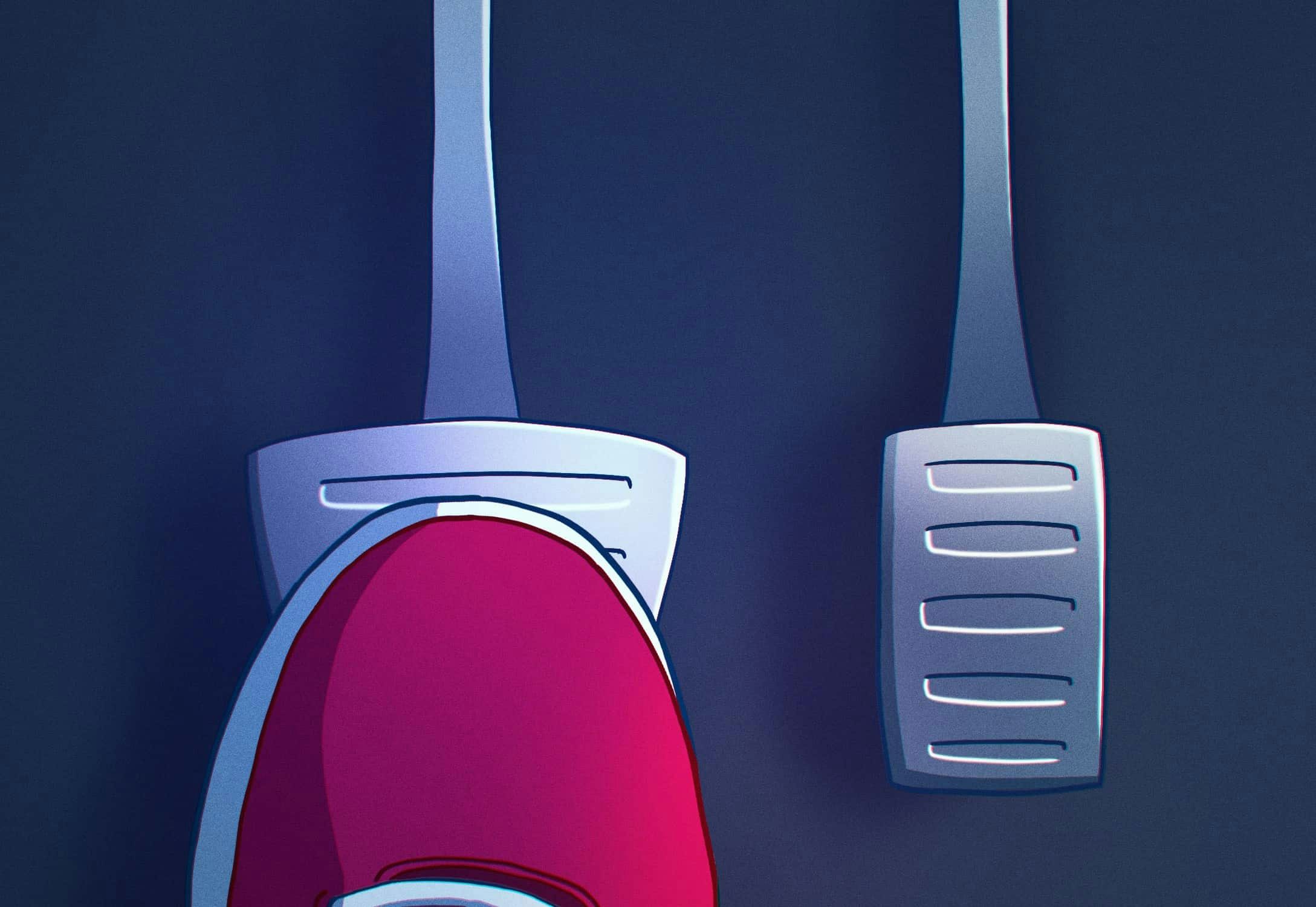
If you have time to stop, brake and sound your horn. Flashing your headlights may cause the animal to freeze. After passing by, you can flash your headlights to warn other drivers of something near/on the road.
Report all crashes involving large animals (e.g. farm animals or deers) to the police.
Avoid overcorrecting
Overcorrecting is when you steer the wheel too hard, causing you to lose control of the vehicle. Overcorrection crashes often occur when a driver tries to avoid driving off the road or tries to avoid a collision – and in response yanks the steering wheel too hard.
For example, drivers trying to avoid an animal on the road often steer excessively hard which causes the vehicle to veer off the road.
12 Common Types of Driving Emergency Situations
Stopping Your Vehicle on the Road
Don’t stop your vehicle on the road unless to obey the law or if necessary for your safety. If you must stop, try to brake early to alert other drivers that you are slowing down.
Typically, in case of a vehicle breakdown or other vehicle emergency, follow these steps:
- Try to pull off the road. If unable to pull off the road, try to move away from traffic
- Don’t stop at a spot with limited vision. Other vehicles must be able to see you clearly from both directions
- Turn on your emergency lights (also known as hazard lights)
If it is safe to exit the vehicle:
- Stay off the road
- Place emergency triangles 200-300 feet behind your vehicle to warn approaching traffic
- Lift the hood to indicate an emergency situation
Never change a tire if you are forced to stand in a traffic lane. The risk of a collision is much higher.
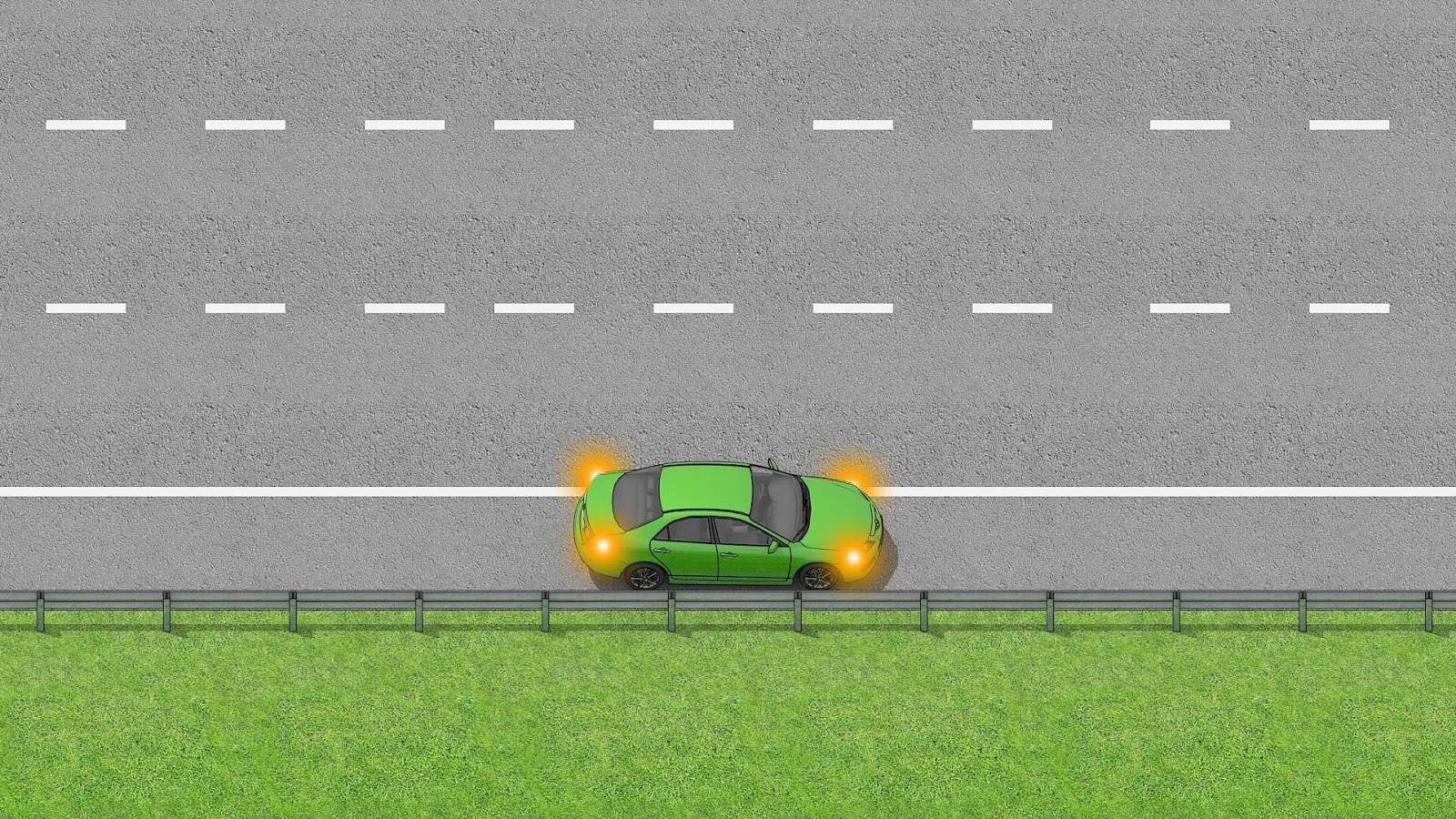
Different emergencies require different actions as they can range from the loss of a wheel to brake failure. Don’t panic though – you likely have a second or two to take in the scene and think before you must act.
Tire Blowout or Loss of Wheel
In case of a tire blowout or loss of a wheel:
- Keep a firm grip on the steering wheel and steer straight
- Release the gas pedal
- Brake gently once the car is under control, not before! Braking too early can cause you to lose control entirely
- Pull off the road
To avoid a tire blowout or a flat tire, ensure your tires are in good condition with regular checks and maintain the recommended pressure. If you notice a flat tire on one wheel, make sure you check all the tires as they may have been punctured as well.
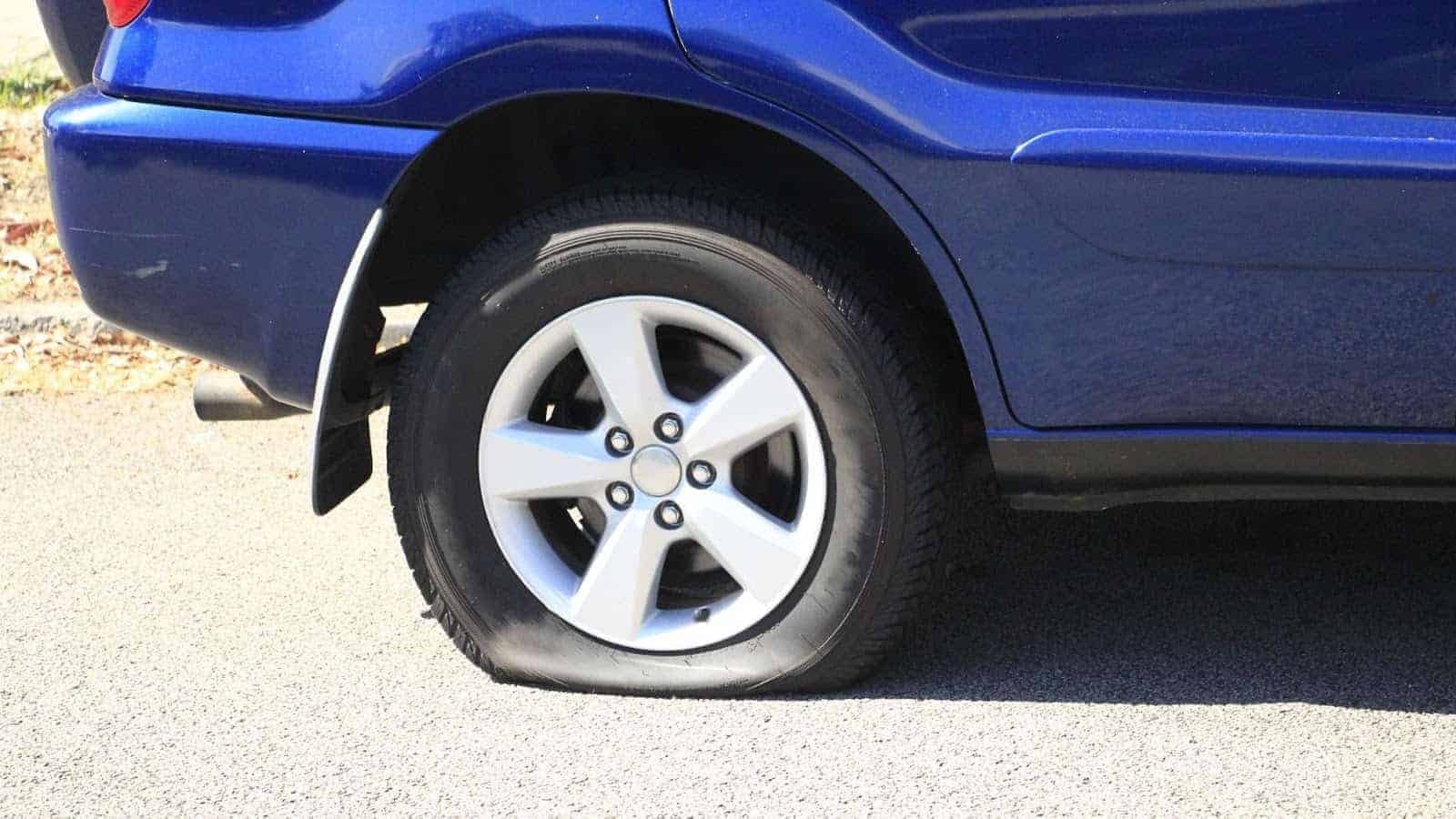
Steering failure
If your vehicle doesn’t respond to your steering, take your foot off the gas pedal and turn on your emergency lights. If you experience power steering failure, remember the following:
- If your vehicle continues to go in a straight line and the road ahead is clear, let it decelerate on its own
- If your vehicle steers to any side or the road ahead isn’t clear, you may have to brake. As you can’t steer to control your braking, brake carefully to prevent losing control of your vehicle entirely
Headlight failure

If your headlights stop working, use any other lights such as your hazard lights or high beams that give you enough light to see and be seen by other vehicles. Try to get off the road as soon as safe. If it is too dangerous, pull off the road immediately and call for help.
Jammed gas pedal
If your gas pedal is stuck, try to free it by hooking your foot under it and pulling upwards. If you can’t free the brake pedal:
- Shift to neutral (automatic) or press the clutch (manual)
- Apply firm pressure on the brakes
- If safe, turn on your emergency lights and honk to indicate you are experiencing an emergency
If none of the above works, turn off the engine. However, turning off the engine should be used as a last resort only as it may heavily compromise your ability to steer and brake (turning off the engine will also turn off the power assist system).
Wheels off pavement
If one or two wheels run off the pavement:
- Maintain a firm grip on the steering wheel and steer straight
- Release the gas pedal
- Apply light pressure on the brakes as braking too hard can cause you to lose control
- Signal and ease back onto the road (after checking for traffic behind you!)
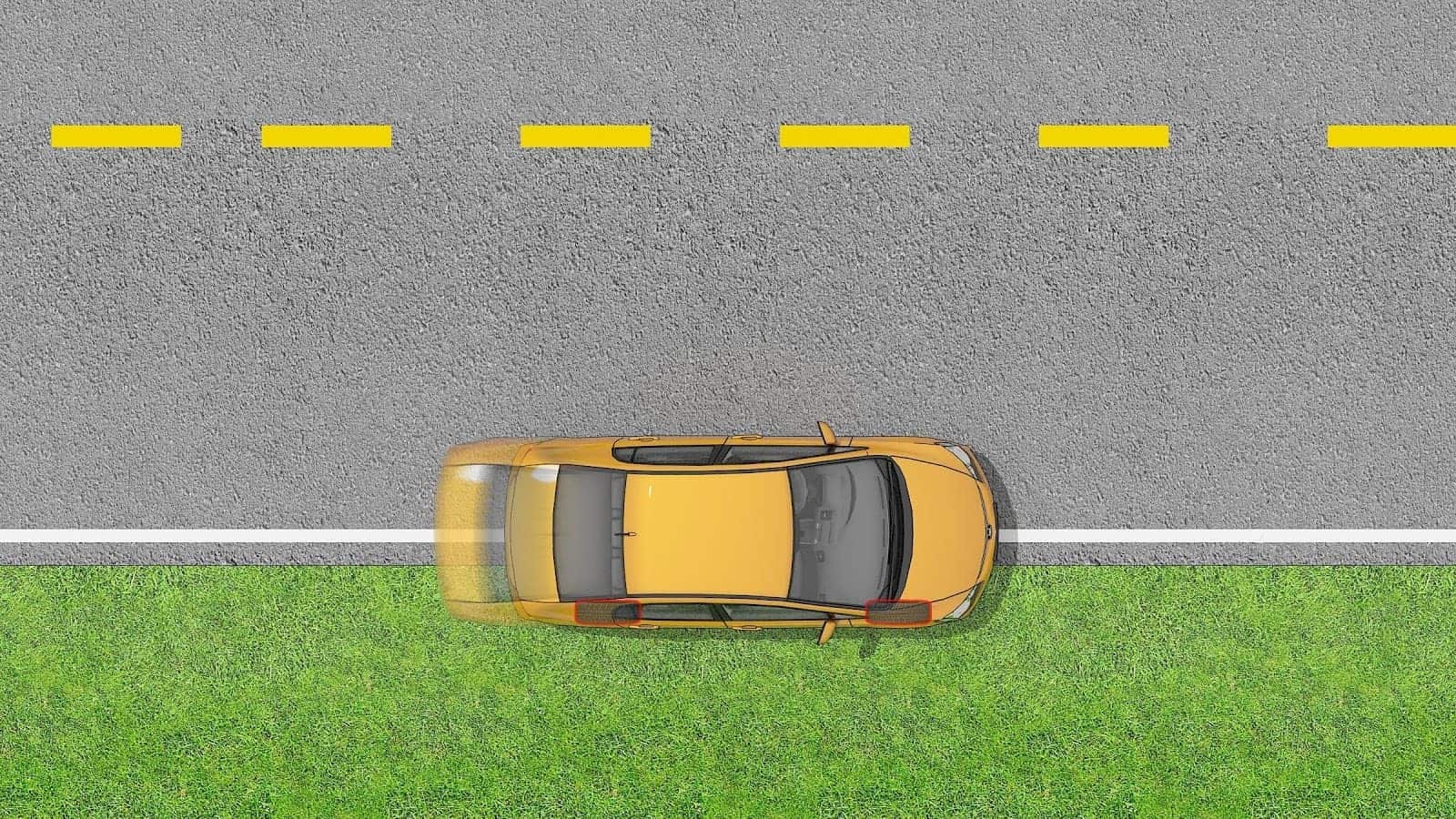
Skidding
Skidding is usually caused by braking, accelerating or steering too harshly or driving too fast for the road conditions. If skidding occurs, remove the cause by releasing the brake pedal fully or easing off the accelerator.
In case of a rear-wheel skid:
- Turn the steering wheel in the direction of the skid (i.e. the direction your rear wheels slide)
- If you slide the other way as you try to recover, turn the steering wheel that way. You may have to do this several times to get control of the vehicle
If your vehicle has ABS, maintain firm pressure on the brake pedal. Otherwise, avoid braking until you have slowed down.

In case of a front-wheel skid:
- Release the gas pedal and shift to neutral (automatic) or press the clutch (manual)
- Don’t try to steer until traction returns
- When traction returns, turn in the direction you want to go
- Release the clutch or put the transmission back to “drive”, and proceed carefully
Prevent skidding by following the ABC plan – Accelerate, Brake, and Corner smoothly. Be extra careful when driving in bad conditions.
Brake Failure
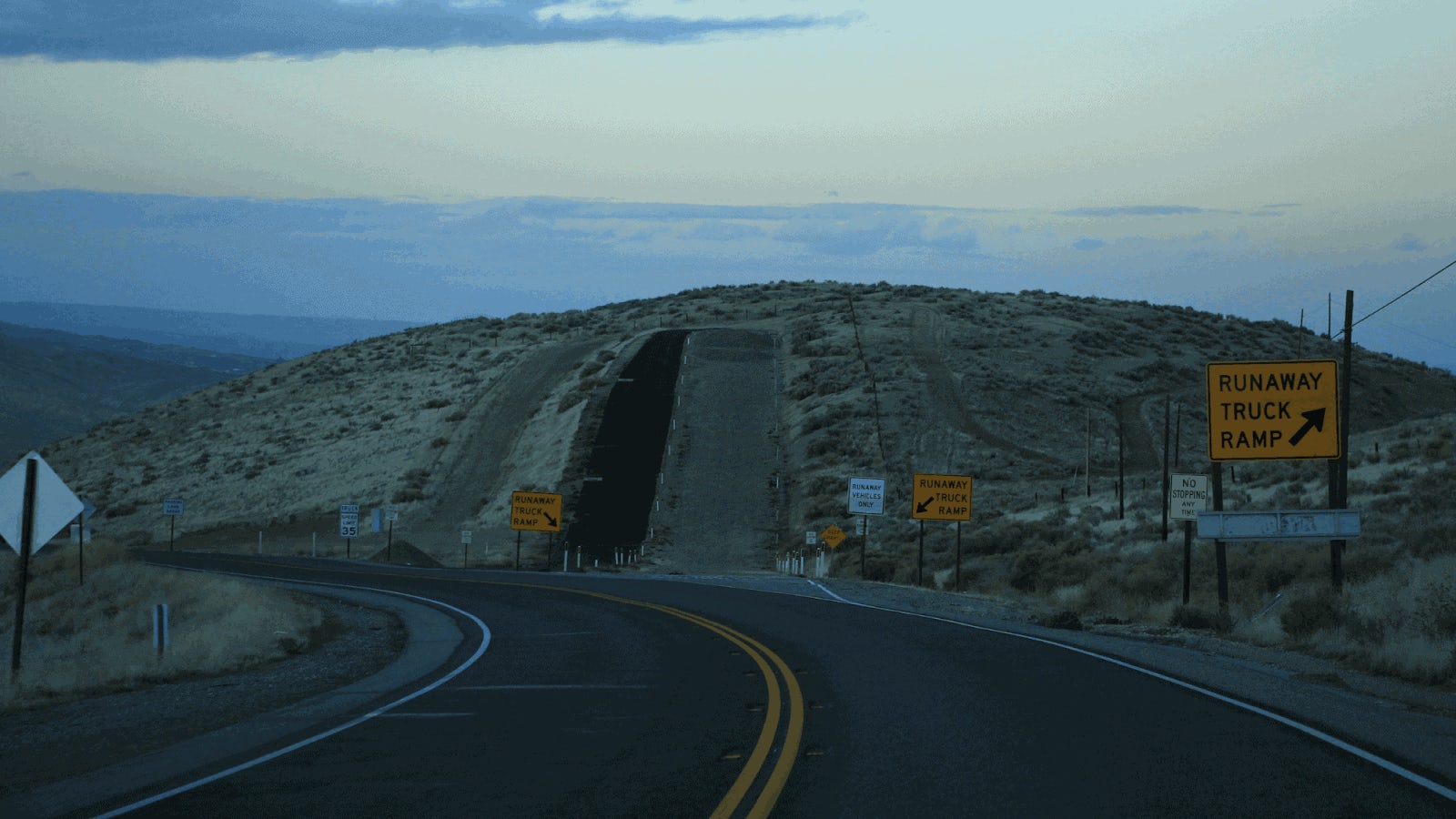
Most modern cars since the 1970s come with a standard safety feature called ABS which stands for Anti-locking Braking System. Even If you’re an experienced driver, unexpected emergency situations may occur. When attempting to avoid imminent collision or danger on the road ahead, you may find yourself instinctively jumping on the brakes which can cause your vehicle to swerve out of control. ABS prevents the wheels from locking up to maintain grip with the road.
If you press your brake pedal and the brake pedal goes all the way to the floor, do the following:
- Shift to a lower gear (manual) or ‘low’ (automatic)
- If driving a vehicle without ABS, try to pump the brake pedal hard and fast to see if you can build up brake fluid pressure.
- Gradually apply the parking brake and keep the release button pressed to prevent the wheels from locking
If none of the above works, try to steer in a safe direction until you roll to a stop. Honk your horn and flash your lights to warn others.
If driving at high speeds, you can slow down using friction by rubbing your vehicle against the divider/curb. However, this is only in extreme cases, and you should be very careful.
Oncoming vehicle in your lane
If an oncoming vehicle crosses over to your lane, sound your horn and flash high beams. If no immediate response, brake hard and steer towards the side of the road.
Don’t pull into the left lane as it may cause a head-on collision if the other driver recovers and pulls back into his/her lane.
Crashing into water
When crashing into water, you need to exit the vehicle immediately. The vehicle will only float for 30 seconds to 2 minutes.
In case your vehicle crashes into the water, do the following:
- Undo your seatbelt
- Open your window as soon as you hit the water and get out of the vehicle as soon as possible. Avoid opening a door as water will flood into the vehicle, making it very difficult to get out
- If unable to open the window, try to break it using heavy tools/objects or by kicking it out
Don’t call 911 until you are safe or unable to get to safety.
Car fire
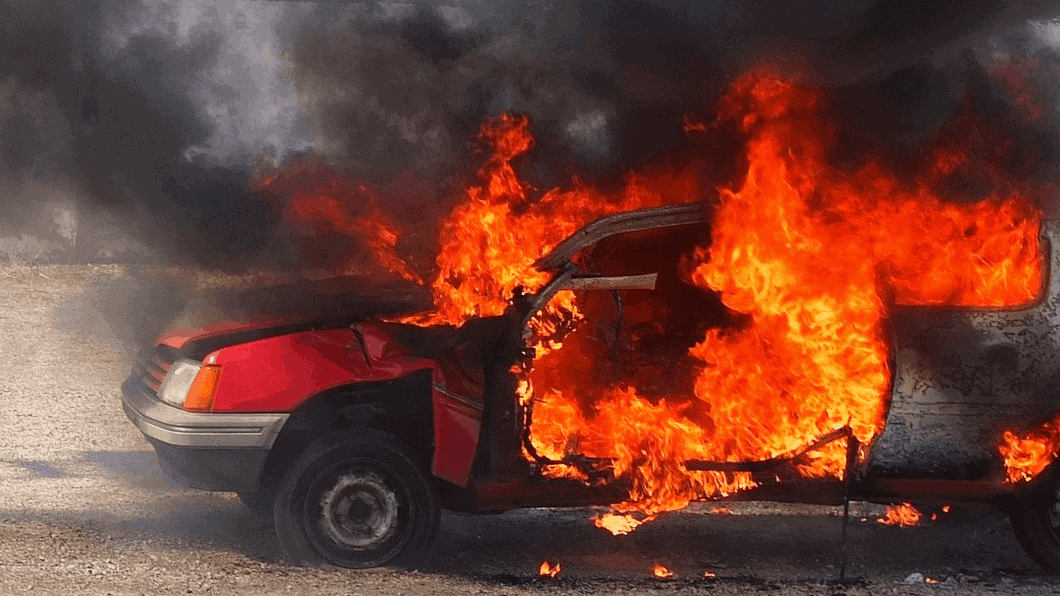
In case of a car fire, immediately pull over and stop. Turn off the ignition, get away from the car and call the fire department.
Unless you know exactly what to do, fighting a car fire can be very dangerous.
Never apply water on a gasoline/diesel fire – it may make the fire worse!
Car fires usually occur due to mechanical failure or failure to maintain your vehicle. Having little of- or no anti-freeze or motor oil can cause the engine to overheat.
Animals on the road
If you see an animal on the road, try to slow down as quickly as possible. Do not swerve! Swerving to avoid hitting an animal that suddenly runs onto the road can create an even more dangerous situation such as running off the road or into oncoming traffic. If you see an animal near the road, slow down! Animals are unpredictable and may suddenly run onto the road or change direction.
If you spot movement on or near the road, slow down! Also, be extra careful when:
- Driving at dusk and dawn as animals tend to be more active during these times
- You see an animal crossing sign
- Driving near woods or water
Furthermore – deer breed during late autumn and most deer collisions occur during this period.
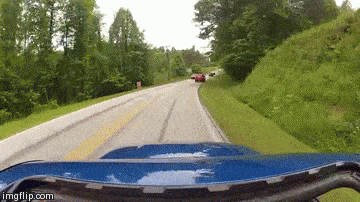

550+ exam-like questions
All you need to ace your test
Perfect for first-timers, renewals and senior citizens
Recommended articles
Ace your DMV test, guaranteed
Want to Be the Top School in Your Area?
- Simple & automated admin
- More time for teaching
- #1 learning materials for students

